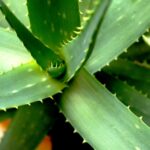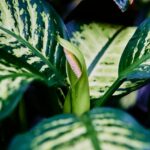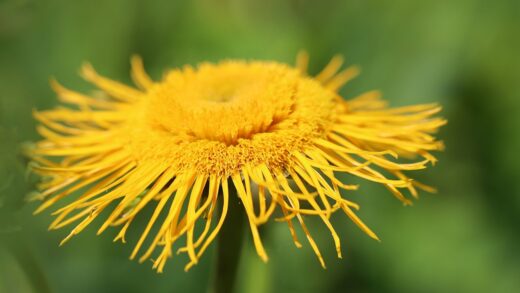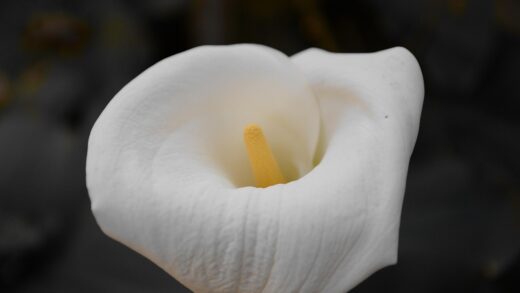Water is an indispensable element in the cultivation of beans, fundamentally influencing every stage of the plant’s life from germination to the final harvest. The precise management of water, through timely and efficient irrigation, is a critical determinant of both the quantity and quality of the yield. An inadequate supply of water can lead to stunted growth, poor pod development, and increased susceptibility to pests, while excessive watering can create an environment ripe for root rot and fungal diseases. Therefore, understanding the dynamic water requirements of the bean plant throughout its lifecycle and implementing appropriate irrigation strategies are essential skills for achieving a successful and bountiful crop.
The water requirements of bean plants are not static; they fluctuate significantly throughout the different stages of their growth cycle. During the initial phase of germination and early seedling development, the primary need is for consistent soil moisture to enable the seed to swell and the radicle to emerge. The soil should be kept uniformly moist but not waterlogged, as oversaturation can deprive the seed of oxygen and lead to rot. Once the seedlings are established, their water needs are relatively moderate as they focus on vegetative growth, developing a strong root system and foliage. A deep watering once a week is often sufficient during this period, depending on soil type and weather conditions.
The most critical period for water availability begins with the onset of the flowering stage. This is when the plant’s water demand increases dramatically, as it requires significant resources to produce blossoms and initiate pod development. Water stress at this time is particularly detrimental and can cause a condition known as “blossom drop,” where the flowers abort and fall from the plant without being pollinated or setting fruit. This directly translates to a reduced number of pods and a lower overall yield. Therefore, it is imperative to ensure the plants receive a consistent and ample supply of water from the moment the first flower buds appear.
This heightened need for water continues and peaks during the pod-fill stage, when the plant is channeling energy and nutrients into developing the seeds within the pods. Inconsistent moisture during this phase can result in small, misshapen, or poorly filled pods, significantly impacting the quality of the harvest. The plants are transpiring at a high rate and require a steady flow of water from the roots to the leaves and developing pods. A general guideline is to provide approximately 2.5 to 4 centimeters of water per week during flowering and pod development, adjusting for high temperatures or windy conditions that increase the rate of evaporation and transpiration.
After the primary harvest, especially for indeterminate pole bean varieties that continue to produce over a longer season, maintaining adequate moisture levels remains important to encourage the formation of new flowers and pods. However, as the season winds down and the plants near the end of their life cycle, their water requirements will naturally decrease. Recognizing and responding to these changing needs is the key to efficient water management and maximizing the plant’s productive potential from start to finish.
More articles on this topic
Recognizing signs of water stress
Being able to identify the signs of water stress, both under-watering and over-watering, is a crucial skill for any gardener. The most common and obvious sign of under-watering, or drought stress, is wilting. During the heat of the day, some temporary wilting can be normal as the rate of transpiration from the leaves exceeds the rate of water uptake by the roots. However, if the leaves remain wilted into the cooler evening hours or are still limp in the morning, it is a clear indication that the plant is not receiving enough water and the soil is too dry.
Other signs of insufficient water include a change in leaf color, where the vibrant green may become dull, grayish, or even begin to yellow. The leaves may also feel dry and crispy to the touch. In prolonged drought conditions, plant growth will be visibly stunted, and as mentioned previously, the plants may drop their flowers or young pods as a survival mechanism to conserve resources. The soil itself is the most direct indicator; if the soil is dry and hard to the touch several centimeters below the surface, it is time to irrigate.
Conversely, over-watering can be just as damaging, though its signs can sometimes be more subtle initially. A primary symptom of waterlogged soil is yellowing leaves, particularly the lower ones. This occurs because the excess water displaces oxygen in the soil, effectively suffocating the roots. Without oxygen, the roots cannot function properly to absorb nutrients, leading to nutrient deficiencies that manifest as chlorosis, or yellowing of the leaves. The leaves of an overwatered plant may also wilt, but unlike a drought-stressed plant, they will feel soft and limp rather than dry, and the soil at the base will be wet.
In severe cases of over-watering, the plant’s root system will begin to rot. Root rot is a serious condition caused by fungal pathogens that thrive in anaerobic, waterlogged soil. The roots will turn brown or black and become mushy. Above ground, the plant’s overall growth will be stunted, and it may eventually die. A musty or foul smell from the soil can also be an indicator of root rot. Learning to distinguish between the symptoms of too little and too much water is essential for diagnosing the problem correctly and taking the appropriate corrective action.
Effective irrigation methods
The method chosen for irrigation can have a significant impact on water efficiency and plant health. One of the most effective and water-wise methods for irrigating beans is drip irrigation. This system uses a network of tubes or tape with small emitters placed at the base of each plant. Water is delivered slowly and directly to the root zone, minimizing water loss due to evaporation from the soil surface and wind drift. Because the foliage remains dry, drip irrigation also significantly reduces the risk of many common fungal and bacterial diseases that spread through water splashing onto the leaves.
Soaker hoses are another excellent option that functions on a similar principle. These porous hoses “weep” water along their entire length, providing a slow and steady supply of moisture directly to the soil. They are laid out along the bean rows, often under a layer of mulch, which further enhances water conservation by reducing evaporation. Both drip systems and soaker hoses promote deep root growth, as the water penetrates further into the soil profile rather than just wetting the surface. This encourages the development of a more extensive and resilient root system.
Overhead watering, such as with a sprinkler or a handheld nozzle, is a common but generally less efficient method. A significant amount of water can be lost to evaporation before it even reaches the ground, especially when watering in the middle of the day or in windy conditions. If overhead watering is the only option, it should be done early in the morning. This timing allows the plant foliage to dry completely during the day, which helps to minimize the risk of disease. Watering in the evening is discouraged because the leaves will remain wet for an extended period overnight, creating an ideal environment for pathogens to thrive.
Furrow irrigation is a method often used in larger-scale agriculture but can be adapted for home gardens with raised beds or distinct rows. This technique involves creating small trenches, or furrows, between the rows of beans and allowing water to flow down these channels. The water then seeps sideways into the soil, watering the roots of the plants on either side. This method keeps the main plant stem and foliage dry but requires a relatively level garden layout to ensure even water distribution along the entire length of the row.
The role of mulch in moisture management
Mulching is a simple yet profoundly effective horticultural practice that plays a vital role in managing soil moisture for bean cultivation. Applying a layer of organic material over the soil surface acts as a physical barrier that reduces the rate of evaporation. This means that the water applied through irrigation or rainfall remains in the soil and available to the plant roots for a longer period. This increased water retention reduces the overall frequency of watering needed, conserving water and saving time and effort for the gardener.
A wide variety of organic materials can be used for mulching beans. Straw, shredded leaves, grass clippings (from an untreated lawn), and compost are all excellent choices. These materials should be applied in a layer that is about 5 to 10 centimeters thick around the base of the plants, being careful to leave a small gap directly around the stems to prevent rot. As these organic mulches slowly decompose, they provide the added benefit of enriching the soil with nutrients and improving its structure over time.
Beyond moisture conservation, mulching offers several other significant advantages. It is a highly effective method for suppressing weed growth. By blocking sunlight from reaching the soil surface, mulch prevents many weed seeds from germinating, which drastically reduces competition for water and nutrients. For the few weeds that do manage to push through, they are typically weaker and easier to pull from the loose layer of mulch. This reduction in weed pressure contributes directly to the health and vigor of the bean crop.
Furthermore, mulch helps to regulate soil temperature. On hot, sunny days, it insulates the soil, keeping it cooler and protecting the shallow roots of the bean plants from heat stress. Conversely, it can also help the soil retain warmth as temperatures cool in the evening. This moderation of soil temperature creates a more stable and favorable environment for root activity and beneficial soil microorganisms. The combined benefits of moisture retention, weed suppression, and temperature regulation make mulching an indispensable technique for successful and sustainable bean cultivation.
Water quality and its impact
While the quantity and timing of irrigation are paramount, the quality of the water used can also have a tangible impact on the health of bean plants and the soil. Most gardeners will use municipal tap water or well water for irrigation. In many cases, this is perfectly acceptable, but it is worth being aware of potential issues. Municipal water is often treated with chlorine or chloramine to ensure it is safe for human consumption. While the levels of these chemicals are typically low, highly sensitive plants can sometimes be affected, and they can have a minor impact on beneficial soil microbes. Letting tap water sit in an open container for 24 hours can allow much of the chlorine to dissipate.
The pH of the irrigation water can also influence the soil’s chemistry over time. Beans prefer a soil pH that is slightly acidic to neutral, generally in the range of 6.0 to 7.0. If the irrigation water is significantly alkaline (with a high pH), its repeated application can gradually raise the soil pH. This can lead to a condition where essential nutrients, such as iron and manganese, become less available to the plants, even if they are present in the soil. This “nutrient lockout” can result in deficiency symptoms, like yellowing leaves. Similarly, highly acidic water can lower the soil pH over time, affecting nutrient availability in other ways.
Salinity, or the salt content of the water, is another important quality parameter, especially in arid regions or coastal areas. High salinity in irrigation water can lead to a buildup of salts in the soil. This creates an osmotic imbalance, making it more difficult for the plant roots to absorb water, even when the soil is moist. The plants can exhibit symptoms similar to drought stress, such as wilting and stunted growth. In severe cases, high salt concentrations can be toxic to the plants. Using rainwater, which is naturally soft and free of salts and treatment chemicals, is an ideal choice for irrigation whenever it can be collected and stored.
For gardeners concerned about their water quality, simple test kits are available to measure pH and sometimes salinity (total dissolved solids). If the water quality is found to be problematic, there are potential remedies. For example, adding a small amount of vinegar or using an acidic fertilizer can help to counteract alkaline water. If salinity is an issue, periodic deep watering or “leaching” can help to flush excess salts down below the root zone. Being mindful of water quality adds another layer of precision to an irrigation strategy, helping to maintain long-term soil health and optimal plant performance.


















